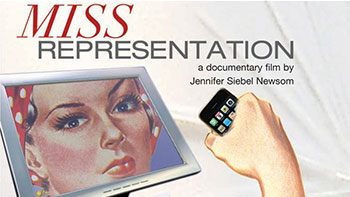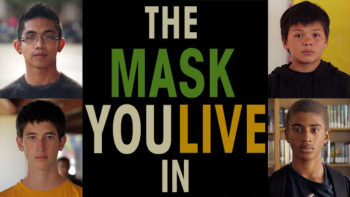A new documentary looks at ‘sexiness in the cyber-age’
by Leanne Westrick
Miss Representation addressed the culture of overtly sexualized images of women and their impact on our how we are perceived in the media. A new documentary, Sexy Baby, delves further into the issue, asking: what does it mean to grow up in a hypersexual climate? What does our culture look like with pornography pushing its way from the peripheral into the mainstream?
The exposure of young girls to a hyper-sexual culture is a relevant topic. The documentary rings especially true for parents attempting to navigate raising their children in a climate where the female body is treated as currency. Daughters are taking their cues on how to act from a “pornified” culture and sons are learning how to treat women from the same script. The media’s efforts to push harder in an effort to be noticed are pushing their way straight into our homes. This is a simple fact of our new world.
The digital age has been upon us for quite a while; Sexy Baby takes note of the fact and explores what it means to be a part of a generation that has grown up with pornography at their fingertips. Several books have been published in recent years that express concern over what this kind of reality means for our culture as a whole. The trailer highlights this with its attention to the 12 year-old-subject of the film.
It must be remembered that pornography isn’t new – but the ways in which we access it are. Pornography, and a culture that increasingly imitates it, have repercussions beyond just the sexual aspect. Studies have found that “kids who consume this kind of sex in the media inherit more traditional views of gender — boys as dominant, girls as submissive, in the bedroom and beyond.” The kids in question are growing up and wondering what social scripts should be followed. Young adults naturally become curious about sex and their particular relationship to it with the onset of puberty. Put this curiosity into the context of a culture that simultaneously applauds the risqué and condemns the same behavior in our youth. The younger generation finds itself at a pretty confusing crossroads. Everything in the media is saying to push farther and risk more. The truth is that sex is a premium in the media driven world that most of us grow up in.
The generations that are growing up (and that have grown up) in this climate can’t simply be seen as victims. These kids know far more about what is available to them through the internet than their parents can imagine. Even if they aren’t aware or actively seeking out pornography or more sexually aggressive content, it has trickled its way into mainstream advertising, movies, television, and magazines. Kim Kardashian was rewarded with celebrity status after her sextape was leaked, S&M subcultures are making their way onto bestseller lists, and leaked nude photographs barely raise an eyebrow on the scandal-meter.
This isn’t a call to stifle or police emerging sexuality, but rather to call attention to the connection between sexual development and the underlying messages about women that exist in our culture. Young girls are witnessing the value that is placed on women for their youth and physical appeal. The climate we exist in perpetuates “myths of women’s unconditional sexual availability and object status, and thus undermine women’s rights to sexual autonomy, physical safety and economic and social equality.”
In short, the images that we’re selling young girls are selling them short.
Leanne Westrick is an intern with MissRepresentation.org and a student at the University of San Francisco



